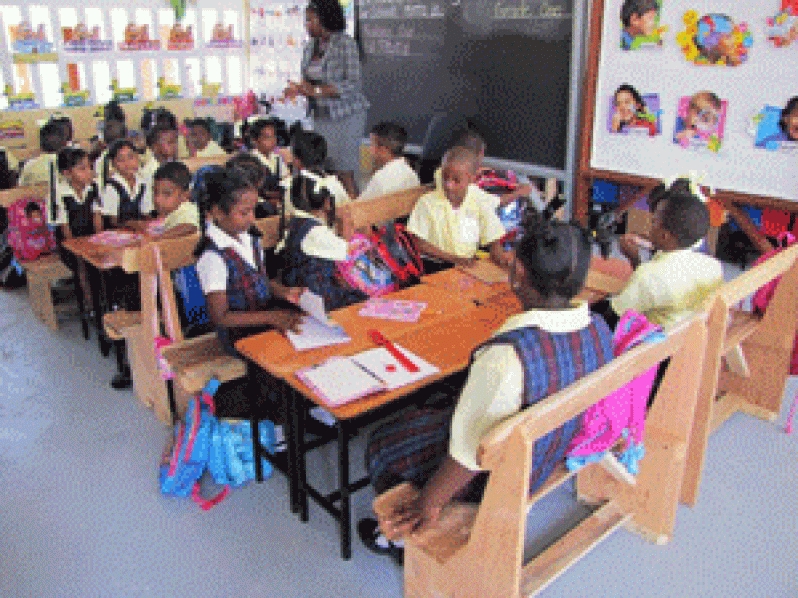THE annual highlighting of the education sector for a one-month period illustrates the significant advancement and gains made, beginning from about 1993, when the strategies to overhaul a decrepit system, commenced.
 It is definite that education, apart from health, is the uncontested foundation upon which every modern, successful state is built.
It is definite that education, apart from health, is the uncontested foundation upon which every modern, successful state is built.
A careful and concise analysis of some of the world’s most successful states would show that they have been served by a continuous corps of highly trained professionals, beneficiaries of sustained financial inputs in their particular state’s education system.
Massive investments
Since 1993, huge sums have been invested by the PPP/C Government in this pivotal sector of national development. To understand the dynamics of the problem of modernising the primitive education system, one has to appreciate the fact that education, as a percentage of the national budget, rose from an insignificant level of 4.4% in 1990, to a current average of 15% over the past seven years. It means that from 1993 onwards, spending in this sector has risen exponentially to a level where this year’s allocation is $26.5M. This speaks of the centrality of this sector to national development.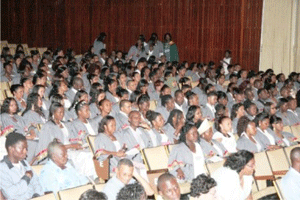
Government’s investment since 1992 has catered for infrastructure development, teacher training, curricula development, and programmes designed for providing moral and social support for improved student performance.
Teacher Reform
The Ministry of Education, in conjunction with the World Bank, launched a US$5.12M Guyana Improving Teacher Education Project (GITEP) that has, as its central focus, the improvement of the effectiveness and efficiency in delivering quality teacher education.
This programme centres specifically on facilitating teachers the opportunity to improve their qualifications to the Master’s level and beyond, aiming for a better quality educator leaving the Cyril Potter College of Education (CPCE). Other objectives of this strategy include more efficient provision of teacher education and better use of resources, and improved management of teacher education programmes.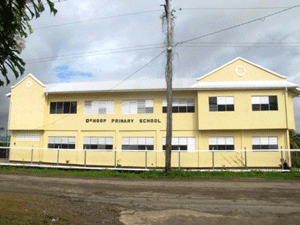 Over 500 teachers are trained annually at government’s expense at the CPCE, and a Secondary School Academic Certificate Programme was initiated to reduce the number of untrained teachers in the school system.
Over 500 teachers are trained annually at government’s expense at the CPCE, and a Secondary School Academic Certificate Programme was initiated to reduce the number of untrained teachers in the school system.
Hinterland teaching
Most of the hinterland teachers were poorly trained and unqualified, because of their inability to access proper training at the centrally- based CPCE, as a result of their great distance from this institution. This has since been corrected with the introduction of the long distance training programme via the Guyana Basic Education Training (GBET).
This intervention has trained in excess of 1200 teachers, and over 400 heads of schools. The results of this innovation have ever since begun to be reflected in the vastly improved results of the SSEE, and CXC components of the Hinterland Scholarship Programme.
NCERD
The National Centre For Education Resource Development (NCERD) is also part of the grand programme guiding teachers through the important areas of guidance counselling, classroom management, special education, mathematics and the sciences.
In 2002, NCERD introduced an 18-month Certificate in Education Management programme. Already over 2000 teachers have been trained in a process which is also conducted along the Distance Education pathway.
There is the non-graduate course for Mathematics and English teachers, that also includes Physics, Chemistry and Biology. This multi-discipline component is delivered via distance learning.
There is also the newly introduced Associate Degree in Education that will phase out the Certificate in Education. And since Information and Communication Technology (ICT) is the vehicle that will take this country’s transformation process forward, teachers are benefiting from a Ministry of Education design of a technical teachers’ training programme 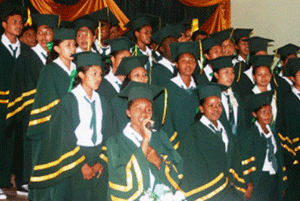 launched in 2011. Thus far, 730 teachers have already received basic training in ICT.
launched in 2011. Thus far, 730 teachers have already received basic training in ICT.
Infrastructure
The providing and refurbishing of infrastructure has been a most crucial plank in the government’s plan to improve the quality of education delivered to the nation’s students; and over the past 19 years, about 1,000 schools have been built and renovated throughout the 10 administrative regions. The hinterland communities were particularly targeted for this intervention, since schools were non-existent in most areas.
Among the recently built schools are the $16M ‘C’ Field Sophia nursery; the $58.3M Parfait Harmonie and $45M De Hoop Primary schools; the $293M Leonora Secondary School; the $77.7M Sand Creek Secondary School; and the $427.5M Leonora Technical Institute. The most recent one is the Diamond/Grove Primary School, which opened its doors on September 3.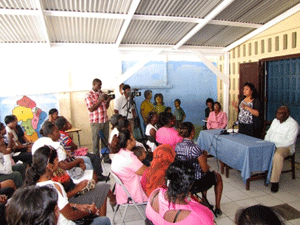
From 30% of the population accessing secondary education when this administration took office, today it can boast of having made significant strides towards achieving universal secondary education.
Much attention is paid especially to hinterland areas, with students afforded secondary education at the Aishalton, Annai and St Ignatius schools,Region 9; at Paramakatoi, Region 8; St Cuthbert’s Mission, Region 4; Port Kaituma and Mabaruma, Region 1; and Bartica and Waramadong, Region 7. New secondary schools are being built at Kato, Region 8, and Waramadong to cater for an increasing school population.
Curricula
Because of deficiencies observed in the general numeracy and literacy aspects of sections of the local student population, the Ministry of Education has introduced a programme for specific attention to these two core areas in respect of students who need assistance. This tuition is offered not only through the August vacation period, but also after the normal school hours, the aim being to correct deficiencies, thereby enabling students to have a better grasp as they advance further. An innovation in this programme is a five-month project that has been introduced in 32 secondary schools throughout the regions, aimed also at improving Maths and English results by a projected 20 percent.
Perhaps the most important addition to schools’ curricula has been the introduction of ICT that has rapidly become a significant centrepiece in the transformation process. This programme has so far resulted in the computerisation of more than 110 secondary schools. A total of 1400 computer systems and related accessories for computer laboratories were procured.
Other initiatives
The National School Feeding and Uniforms programme, provision of text books and the new pilot programme to better Maths and English results, are also contributing to the sector’s improvement.
Because of its huge budgetary expenditure of billions of dollars, the education sector has been playing its important role of providing the quality educated Guyanese, needed for the arduous task of nation building. This is supported by the following observation – that top examination students performers are now produced by junior secondary schools throughout the coastal regions, rather than the traditionally exclusive senior secondary schools.
One will agree that better results can be forthcoming; but one is assured, because of the many programmes that are at work, of a better delivery standard.



.jpg)



